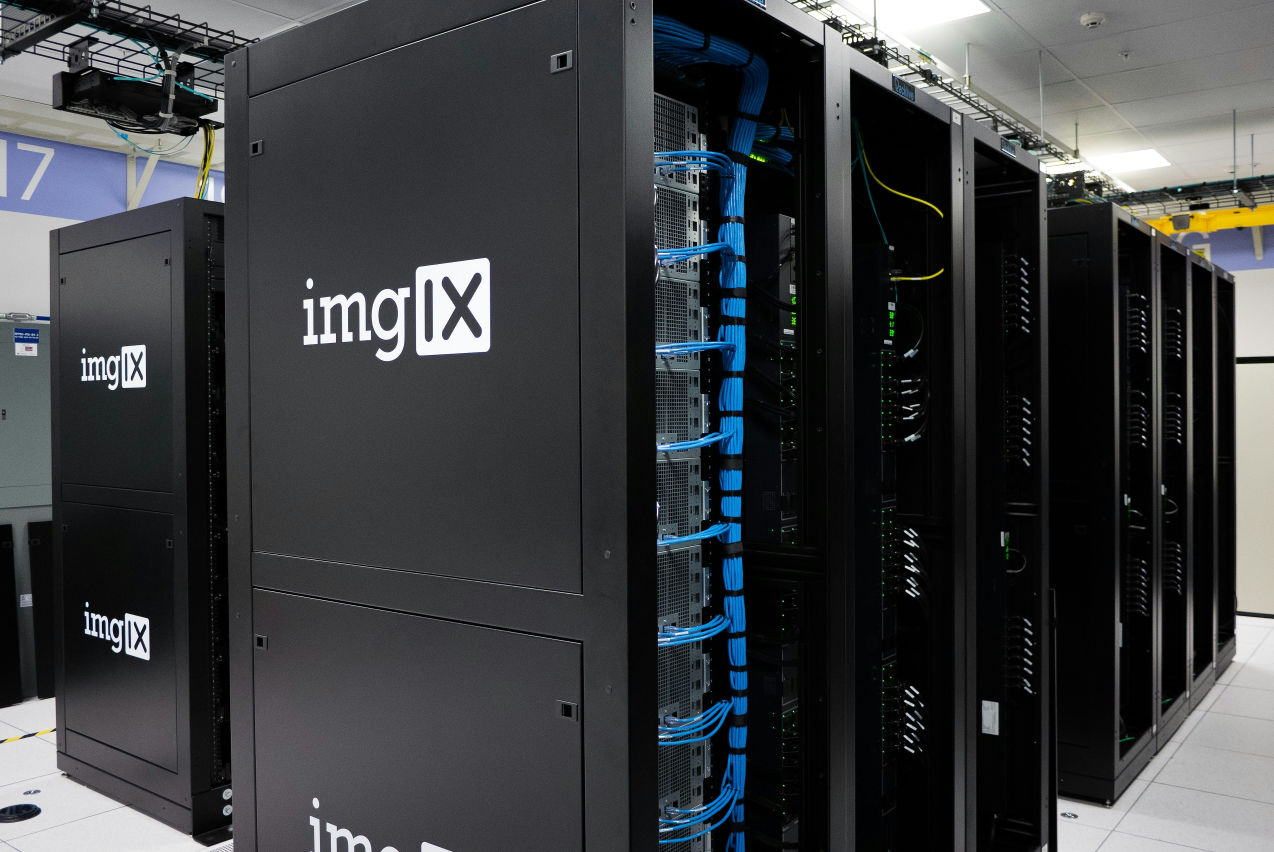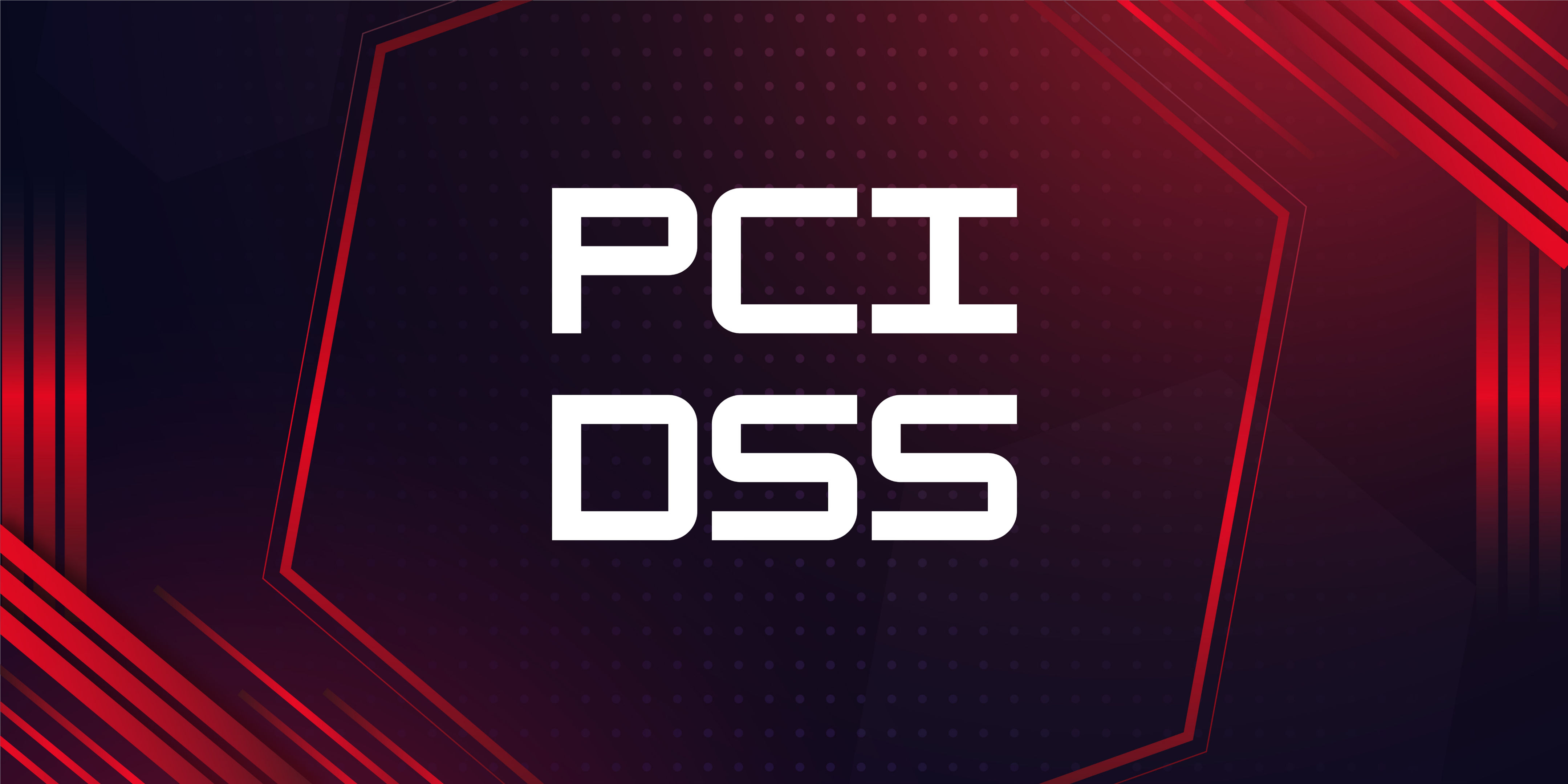Maximizing Security: Vulnerability Management Lifecycle

Businesses and organizations increasingly rely on information technology and safeguarding sensitive data and systems has become paramount. This is where the concept of a vulnerability management lifecycle plays a crucial role in ensuring cyber resilience. By understanding and implementing this process, organizations can identify, assess, and mitigate risks and enhance their overall security posture.
What Is the Vulnerability Management Lifecycle?
Vulnerability management is a systematic approach to managing security vulnerabilities within an organization. The lifecycle encompasses a series of steps designed to help security teams proactively address vulnerabilities before they can be exploited by malicious actors. This lifecycle approach is continuous and iterative, ensuring that vulnerability management remains dynamic and can adapt to new threats as they emerge.
Defining Vulnerability Management Lifecycle
It can be defined as a comprehensive framework that includes the identification, evaluation, treatment, and reporting of security vulnerabilities. This framework is built on the principle that effective security is not a one-time effort but a continuous improvement cycle. The key phases of the vulnerability management lifecycle include:
- Identification: This initial phase involves the discovery of existing vulnerabilities in software and hardware components. Tools such as scanners and threat intelligence feeds play a crucial role in identifying known and emerging vulnerabilities.
- Evaluation: Once vulnerabilities are identified, they must be evaluated to determine their severity and risk to the organization. This evaluation often considers factors such as the ease of exploitation, the potential impact of an exploit, and the current threat environment.
- Prioritization: Based on the evaluation, vulnerabilities are prioritized for remediation. Factors that influence prioritization include the severity of the vulnerability, the value of the assets at risk, and the cost of mitigation.
- Remediation: During this phase, identified vulnerabilities are addressed through patching, configuration changes, or other mitigation strategies. The goal is to reduce the risk to an acceptable level based on the organization's risk tolerance.
- Verification: After implementing remediation efforts, it is essential to verify that vulnerabilities have been successfully mitigated. Additional testing and assessments are conducted to ensure that no residual risk remains.
- Reporting and Improvement: The final phase involves documenting the vulnerability management process and its outcomes. This documentation helps in auditing, compliance, and improving vulnerability management practices over time.
Importance of Vulnerability Management in Cybersecurity
Managing Vulnerability is critical to cybersecurity for several reasons. First, it allows organizations to stay ahead of attackers by proactively identifying and addressing vulnerabilities before they can be exploited. This proactive approach is far more cost-effective and less disruptive than responding to security breaches after they occur.
Moreover, vulnerability management helps comply with regulatory requirements, which often mandate regular security assessments and implement a systematic approach to managing vulnerabilities. By adhering to these guidelines, organizations can avoid legal and financial penalties associated with non-compliance.
Additionally, effective vulnerability management enhances the trust of customers and partners. In an era where data breaches can damage reputations and lead to significant financial losses, maintaining robust security practices is essential for preserving business relationships and market position.

Automated Vulnerability Assessment
This refers to using software tools and systems to scan, identify, and sometimes prioritize vulnerabilities in an organization's IT infrastructure. These tools are designed to perform extensive checks across the network to detect known security issues and weaknesses in systems and network devices. The key advantages of automated assessments include:
- Speed and Efficiency: Automated tools can scan a vast number of systems and applications quickly, providing frequent and regular assessments without the need for manual intervention.
- Comprehensiveness: They are capable of checking against extensive databases of known vulnerabilities, ensuring no stone is left unturned.
- Consistency: Automated assessments provide consistent results, free from human error or oversight.
- Cost-effectiveness: Once set up, these tools require minimal additional cost to run regularly.
However, automated tools might only catch some issues, especially those related to custom-made applications or complex environments that require contextual understanding to assess risk accurately.
Manual Vulnerability Assessment
In contrast to automated tools, manual vulnerability assessments are carried out by security experts who bring in-depth knowledge and contextual analysis to the process. These assessments are critical for:
- Complex Systems Analysis: Manual testing is essential for systems that are too complex for automated tools to analyze accurately.
- Custom Applications: Custom-built applications often require a human eye to identify and understand unique vulnerabilities that automated scanners might overlook.
- Deep Dive Investigations: Experts can perform in-depth checks beyond what automated tools can achieve, such as inspecting business logic flaws or intricate application workflows.
- Verification of Automated Findings: Manual assessments also play a crucial role in verifying and prioritizing the vulnerabilities found by automated tools, providing a deeper insight into how they can be exploited and the potential impact.
While more time-consuming and resource-intensive, manual vulnerability assessments bring depth and understanding to the vulnerability management process that is indispensable, especially in highly sensitive or complex environments.
Types of Vulnerability Management
One crucial aspect of cybersecurity is vulnerability management, which involves various strategies and assessments tailored to different parts of an organization's IT ecosystem. Each type of vulnerability management focuses on specific areas and employs different tools and techniques to identify and mitigate risks. This targeted approach ensures that all aspects of an organization’s network, systems, and applications are secure against threats. Below, we explore three primary types of vulnerability management: network, host-based, and application vulnerability assessments.
Network Vulnerability Assessment
This process is focused on identifying security issues within an organization's network infrastructure. This also includes network security management for all network devices, such as routers, switches, firewalls, and the networks themselves, like wireless and wired connections. The main objectives of this type of assessment are to:
- Detect Security Weaknesses: Identify vulnerabilities in the network that could be exploited by attackers, such as open ports, unsecured network protocols, and misconfigurations.
- Map Network Visibility: Gain a comprehensive understanding of the network’s architecture, which helps identify how attacks could propagate through the system.
- Prioritize Risks: Evaluate the criticality of identified vulnerabilities based on the potential impact and likelihood of exploitation, guiding the remediation efforts effectively.
Tools used in network vulnerability assessments typically scan for vulnerabilities at a broad scale and provide insights into the security posture of the entire network, making it easier to understand where critical vulnerabilities lie.
Host-Based Vulnerability Assessment
This assessment focuses on individual systems or hosts within an organization. These assessments are crucial for securing endpoints, servers, and other single entities that could be targeted by attackers. Key elements of host-based evaluations include:
- System-Level Vulnerabilities: Identify issues directly within the host, such as outdated operating systems, missing patches, insecure software configurations, and harmful system modifications.
- Local Processes and File Systems: Analysis of running processes, system and application logs, and file system configurations to detect any signs of tampering or malicious activity.
- Compliance Checks: Ensuring that each host complies with internal and external security standards and policies to mitigate compliance-related risks.
Host-based assessments provide a deep dive into the security state of individual devices, offering detailed insights that are not usually possible with network-wide scans.
Application Vulnerability Assessment
The target in application vulnerability is toward web and desktop applications and is critical in identifying security flaws in application software that could lead to unauthorized access or data breaches. This assessment type focuses on:
- Application Code: Scanning the application’s source code to detect security flaws such as SQL injection, cross-site scripting (XSS), and other common vulnerabilities that could be exploited by attackers.
- Application Behavior: Testing how the application behaves under various conditions to identify security issues that may not be visible in the code itself.
- Third-party Components: Assessing third-party libraries and components that could introduce vulnerabilities into the application environment.
Application vulnerability assessments are essential for organizations that develop or use custom applications, as they help secure applications from the inside out, protecting sensitive data and business processes from potential threats.
Database Vulnerability Assessment
This assessment explicitly targets the databases within an organization, which often hold sensitive and critical data. This type of assessment aims to identify security weaknesses in database configurations, management, and access controls that could be exploited. Key components include:
- Configuration Checks: Evaluating database configurations for compliance and risk with best security practices, such as ensuring that default accounts and passwords are changed.
- Access Controls: Assessing who has access to what data and whether those permissions are appropriate based on their role within the organization.
- SQL Injection Analysis: Testing databases for vulnerabilities that could allow SQL injection, a common attack where malicious SQL statements are inserted into an entry field to execute unauthorized database commands.
Regular database assessments help ensure that critical data remains secure and that databases operate effectively under security best practices.

Wireless Vulnerability Assessment
Wireless networks are prevalent in most modern organizations, and thus, they represent a significant vector for potential security breaches. Wireless vulnerability assessments focus on identifying weaknesses in wireless network protocols, configurations, and encryption techniques. Important aspects include:
- Encryption Strength: Checking the strength and implementation of encryption methods to protect wireless communications.
- Unauthorized Access: Detecting unauthorized or rogue access points that may be connected to the network without proper security measures.
- Signal Leakage: Assessing whether the wireless signals extend beyond the physical boundaries of the organization, potentially allowing outsiders to access the network from nearby locations.
Ensuring the security of wireless networks is crucial, given their susceptibility to eavesdropping and other forms of interception.
Physical Security Assessment
Security assessments evaluate the security measures that protect the organization’s physical assets from unauthorized access or harm. This involves an inspection of:
- Entry and Exit Points: Checking the security of doors, windows, and other access points to prevent unauthorized entry.
- Security Systems: Reviewing the adequacy and effectiveness of security systems such as CCTV cameras, motion detectors, and alarm systems.
- Environmental Controls: Assessing the protection mechanisms against environmental hazards, such as fire suppression systems and flood defenses.
A robust physical security framework protects critical infrastructure and prevents physical tampering or theft.
Human Vulnerability Assessment
This important assessment focuses on the security risks associated with human organizational behavior and interactions. This type of assessment evaluates:
- Social Engineering Susceptibility: Testing how employees respond to attempts to gain sensitive information through deception, such as phishing and smishing attacks.
- Training and Awareness: Assessing the effectiveness of security training programs and whether employees know the security policies and procedures.
- Insider Threat Evaluation: Identifying potential security risks from within the organization, including disgruntled employees or those susceptible to bribery or coercion.
Addressing human vulnerabilities is essential, as human error or malice is often the weakest link in the security chain. Adding a human firewall to your organization is an effective tool against many vulnerabilities.
The Stages of Vulnerability Management Lifecycle
Vulnerability management is a systematic approach organizations use to prevent cybersecurity threats through the ongoing management of vulnerabilities. This lifecycle is generally divided into six key stages, each vital in ensuring that vulnerabilities are identified, assessed, remediated, and monitored continuously. Understanding and effectively implementing each stage can significantly enhance an organization's security posture and resilience against cyber attacks.
Overview of the Six Stages
The six stages of the vulnerability management lifecycle are designed to provide a structured approach to managing risks associated with IT vulnerabilities. Here’s a breakdown of each stage:
- Preparation: Before beginning the vulnerability management process, organizations need to prepare by establishing a vulnerability management policy, defining roles and responsibilities, and selecting appropriate tools and resources. This stage sets the groundwork for a successful vulnerability management program by ensuring that all necessary elements are in place.
- Identification: This stage involves detecting existing vulnerabilities in the system. Tools such as vulnerability scanners, software composition analysis tools, and penetration testing are employed to uncover flaws in software, hardware, and networks. This is a critical stage as it helps develop an inventory of all assets and their associated vulnerabilities.
- Analysis: Once vulnerabilities are identified, the next step is to analyze their nature, cause, and potential impact on the organization. This includes classifying vulnerabilities based on their severity and potential damage, thus prioritizing them for remediation based on risk assessment.
- Remediation: In this stage, the focus shifts to addressing the vulnerabilities. Remediation can include patching software, modifying firewall rules, tightening network access controls, or even replacing vulnerable systems. Each remediation action should be chosen based on effectiveness, cost, and potential impact on business operations.
- Verification: After remediation efforts, it is essential to verify that vulnerabilities have been successfully resolved and that the fixes have not introduced any new issues. Verification often involves re-testing the systems using the same tools employed in the identification stage to ensure no vulnerabilities remain.
- Monitoring and Reporting: The final stage involves continuous monitoring of the system to detect new vulnerabilities and changes in the IT environment. Regular reporting and analysis of vulnerability data help in maintaining an up-to-date view of an organization’s security posture. This continuous feedback loop allows for the refinement and improvement of the vulnerability management process.
Stage 1: Asset Discovery and Prioritization
The first stage of the vulnerability management lifecycle, Asset Discovery, and Prioritization, lays the groundwork for effective vulnerability management. This stage focuses on understanding all the assets within an organization's network, which is crucial for subsequent vulnerability identification and remediation efforts.
Identify Assets
The process begins with a thorough inventory of all organizational assets. This includes hardware and software components, data assets, and any other resources connected to the network. Effective asset identification involves categorizing assets based on their criticality and function, which helps prioritize them for vulnerability scans. Tools like automated discovery software can aid in detecting both authorized and unauthorized devices on the network, ensuring that nothing is overlooked.

Scan for Vulnerabilities
Once all assets are identified and categorized, the next step involves scanning these assets for vulnerabilities. This involves using automated scanning tools that assess the assets for known vulnerabilities, such as outdated software, missing patches, or misconfigurations. These tools can provide real-time insights into the security state of each asset, highlighting areas that need immediate attention.
Report
After the vulnerabilities are identified through scanning, the results need to be documented in a detailed report. This report should not only list the vulnerabilities but also provide an initial prioritization based on each vulnerability's potential impact and exploitability. The reporting process should be standardized to ensure consistency and include remediation recommendations. This documentation is vital for tracking remediation progress and for historical reference, ensuring that all stakeholders clearly understand the organization's vulnerability status at any given time.
Stage 2: Vulnerability Identification
The second stage of the vulnerability management lifecycle is dedicated to identifying vulnerabilities within the organizational infrastructure. This crucial step directly builds on the foundation laid during asset discovery by employing a variety of tools and methodologies to pinpoint specific vulnerabilities across all identified assets.
Identify Vulnerabilities
During this stage, the focus is on utilizing scanning tools, software solutions, and other assessment methods to uncover vulnerabilities. This involves both automated and manual testing techniques to examine the systems for any security weaknesses thoroughly. Automated scanning tools are typically employed to conduct broad sweeps of networks, systems, and applications to detect known vulnerabilities, such as those cataloged in public databases like the Common Vulnerabilities and Exposures (CVE) list. Manual techniques, including penetration testing, are used to delve deeper into critical systems to identify vulnerabilities that automated tools might miss, such as logic flaws or complex exploit scenarios.
The process of identifying vulnerabilities also involves the analysis of software composition, configuration settings, and compliance with security best practices. Specialized tools can analyze code for programming errors and inspect configurations for deviations from recommended security settings. The goal is to create a comprehensive view of potential security issues that could be exploited by malicious actors.
Stage 3: Vulnerability Prioritization
The third stage of the vulnerability management lifecycle, Vulnerability Prioritization, is where the focus shifts from identification to determining the urgency and order in which identified vulnerabilities should be addressed. This stage is critical because it helps organizations allocate resources efficiently, focusing on the most significant threats first to reduce the overall risk to the enterprise.
Assign Value
The first step in this stage is to assign a value to each asset affected by the identified vulnerabilities. This valuation is based on the asset's importance to business operations and the potential impact of its compromise on the organization. For example, a server containing sensitive customer information would be assigned a higher value than a less critical workstation. By understanding the value of each asset, organizations can prioritize vulnerabilities that pose the most significant risk to their most critical assets.
Gauge Exposure
Next, organizations need to gauge the exposure level of each vulnerability. This involves assessing how exposed the vulnerability is to potential exploitation. Factors such as the ease of exploitation, the current availability of exploit code, the complexity of the required attack, and the level of access required are all considered. Vulnerabilities that are easy to exploit and require low privileges, especially if the exploit code is publicly available, receive a higher priority.
Add Threat Context
Adding threat context involves incorporating external intelligence about the current threat landscape, such as information about active exploits in the wild, recent cyber attack trends, and advisories from cybersecurity organizations. This context helps to understand not just the theoretical risk posed by a vulnerability but also its practical implications in the current cyber environment.
Stage 4: Remediation and Mitigation
Stage four of the vulnerability management lifecycle, Remediation and Mitigation is crucial as it involves taking direct action to address the vulnerabilities that have been identified and prioritized in earlier stages. This stage is about implementing solutions that completely resolve the vulnerability or reduce the risk to an acceptable level.
Remediate
This usually involves patching software, upgrading hardware, or changing configurations identified as insecure. Remediation is the process of directly addressing and eliminating a vulnerability. The remediation process is prioritized based on the vulnerability's risk level determined in the previous stage. Effective remediation requires thorough testing to ensure that the changes do not adversely affect system stability or create new vulnerabilities.
Mitigate
Mitigation measures are applied when immediate remediation is not feasible due to operational constraints, availability of patches, or other reasons. Mitigation involves putting in place controls that reduce the risk of a vulnerability being exploited without eliminating the vulnerability itself. This can include additional monitoring, changing firewall rules to block specific traffic, isolating affected systems, or increasing security controls around sensitive data impacted by the vulnerability.
Accept Risk
Sometimes, an organization may accept the risk associated with a particular vulnerability after evaluating the cost and impact of remediation or mitigation. This decision is usually taken when the cost of remediation exceeds the potential loss from an exploit or when the likelihood of exploitation is deemed very low. Accepting risk must be a deliberate decision supported by thorough documentation and approval from relevant stakeholders, including a clear understanding of the potential impacts and ongoing monitoring strategies to manage the accepted risk.
Stage 5: Reporting and Improvement
Stage five of the vulnerability management lifecycle, Reporting, and Improvement, focuses on assessing the efficacy of the remediation and mitigation efforts and documenting the outcomes to inform future actions. This stage is vital for ensuring the vulnerability management process is dynamic and adaptive, incorporating lessons learned and continuously enhancing the organization's security posture.
Rescan
After vulnerabilities have been addressed through remediation or mitigation, conducting a rescan of the affected systems is crucial. This step involves using the same tools and methods that were used during the initial vulnerability identification stage to ensure that the vulnerabilities have been fully resolved. Rescanning helps to confirm the effectiveness of the measures taken and to check for any residual vulnerabilities that might still pose a risk. It also serves to identify any new vulnerabilities that may have been introduced inadvertently during the remediation process.
Validate
Validation goes beyond rescanning; it involves a comprehensive review to ensure that all remediation actions have been properly implemented and are functioning as intended. This includes verifying that patches have been applied correctly, configurations have been changed appropriately, and no additional issues have been introduced into the environment. Validation should be thorough and might sometimes require manual checks or different tools to cross-verify the security posture.
In addition to rescanning and validating, this stage also includes the preparation of detailed reports. These reports should document the vulnerabilities that were found, the actions taken to address them, the results of rescans, and any issues encountered during the process. These reports are essential for maintaining a transparent security efforts record and providing accountability. They also serve as valuable resources for planning future security strategies by highlighting areas of strength and pinpointing weaknesses in the current approach.
Stage 6: Monitoring for Verification
The sixth and final stage of the vulnerability management lifecycle, Monitoring for Verification, is a critical ongoing process that ensures the measures taken in earlier stages are continuously effective and that the organization's security posture remains robust. This stage involves rigorous monitoring, evaluation, and adjustment based on performance metrics and evolving security needs.
Evaluate Metrics
In this stage, the organization must continuously monitor and evaluate key performance metrics related to vulnerability management. These metrics can include the number of detected vulnerabilities, the time taken to remediate them, the success rate of patch implementations, and the frequency of security incidents related to known vulnerabilities. Monitoring these metrics provides insight into the effectiveness of the vulnerability management program and helps identify areas where improvements are needed. It also helps to gauge the overall health of an organization’s IT security infrastructure.
Evolve Process and SLAs
Based on the insights gained from evaluating metrics, organizations should look to evolve their vulnerability management processes and update their Service Level Agreements (SLAs) accordingly. This could involve refining detection and remediation strategies, incorporating new tools and technologies, or updating response times in SLAs to reflect current capabilities and risks. Evolving these processes ensures that the vulnerability management program remains aligned with the organization's current security needs and business objectives, thereby enhancing its resilience against cyber threats.
Eliminate Underlying Issues
This stage's key aspect is identifying and eliminating underlying systemic issues that may cause vulnerabilities. This involves analyzing recurring security problems to determine their root causes. Whether it's inadequate software development practices, outdated hardware, or insufficient employee training, addressing these underlying issues can help significantly reduce the occurrence of vulnerabilities. By making systemic changes, organizations can fix current vulnerabilities more effectively and prevent future ones from emerging.
Assets Inventory in Vulnerability Management
An effective vulnerability management program begins with a comprehensive and well-maintained assets inventory. Knowing what assets exist within the organization’s environment is crucial for identifying where vulnerabilities may exist and determining how they should be prioritized. Assets in an organization can broadly be categorized into physical, digital, information, and other types of assets. Each category requires specific strategies for discovery and management to ensure they are adequately protected from potential threats.
Physical Assets
These assets include all tangible items like servers, workstations, network devices, and office equipment that are crucial for daily operations. These assets are vulnerable to both cyber and physical threats. The inventory process for physical assets typically involves manual audits and barcode scanning to track and manage these items throughout their lifecycle. Keeping an up-to-date inventory helps identify which devices need updates or are at the end of their lifecycle and potentially vulnerable to attacks.
Digital Assets
This category also includes virtual environments and cloud resources. Digital assets, software applications, databases, and systems support business processes. Additionally, digital assets are often targets for cyberattacks because they typically process, store, or transmit data. Automated discovery tools can scan networks and systems to identify software and configuration details, which helps maintain an up-to-date inventory of all digital assets.
Information Assets
Critical business data such as customer information, intellectual property, financial records, and other sensitive data come under information assets. Protecting information assets involves securing the physical and digital media on which the data is stored and ensuring that data in transit and at rest is encrypted and access is strictly controlled. Asset inventory for information includes categorizing data based on sensitivity and regulatory requirements, which aids in applying appropriate security measures.
Other Assets
These assets are integral to the business and may include intellectual property not stored digitally, employee knowledge, or the organization's brand reputation. It is only sometimes considered in traditional IT security strategies and requires consideration in a comprehensive vulnerability management program. Identifying and managing these assets often involves collaboration across various departments within the organization.
How to Discover and Prioritize Assets?
Discovering and prioritizing assets is a dynamic process that involves several steps:
- Asset Identification: Utilize automated discovery tools for digital assets, and conduct physical checks for tangible assets. This should also include interviews with department heads to ensure all assets, including non-traditional ones, are accounted for.
- Categorization and Classification: Organize assets into categories and classify them based on their criticality to business operations and the sensitivity of the data they handle.
- Risk Assessment: Assess each asset for vulnerabilities and the potential impact of their compromise on the organization. This includes considering the likelihood of threats and the vulnerability of each asset.
- Prioritization: Prioritize assets based on their criticality and the severity of vulnerabilities. High-value assets that handle sensitive information or are crucial to business continuity should be prioritized for remediation efforts.
Challenges in the Vulnerability Management Lifecycle
Vulnerability management is critical for maintaining cybersecurity but presents several challenges that can hinder its effectiveness. Among the most significant challenges are the overwhelming volume of vulnerabilities, lack of visibility into assets, and inadequate prioritization of risks. Each of these areas poses specific difficulties that can complicate the management of vulnerabilities and, by extension, an organization's overall security posture.
Overwhelming Volume of Vulnerabilities
One of the most daunting challenges in vulnerability management is the sheer number of vulnerabilities that organizations must deal with regularly. With new vulnerabilities being discovered daily and updates and patches released continuously for a wide array of software and hardware, IT teams often struggle to keep up. The volume can be overwhelming, especially for organizations with limited resources, leading to delays in patch management and sometimes overlooked vulnerabilities that could be exploited by attackers.
Lack of Visibility into Assets
Effective vulnerability management starts with a comprehensive understanding of all assets within an organization. However, achieving complete visibility can be challenging, particularly in environments that include a mix of old and new technologies, virtual and cloud assets, and extensive mobile and IoT devices. Without full visibility, some assets may remain unprotected and vulnerable to attacks, making it difficult to ensure comprehensive security coverage. This lack of visibility can lead to gaps in the security infrastructure, where unknown or unmonitored assets become easy targets for malicious actors.
Inadequate Prioritization of Risks
Properly prioritizing which vulnerabilities to address is crucial due to most organizations' limited resources. However, inadequate prioritization can occur when there is insufficient information about the assets or the vulnerabilities themselves or when the prioritization process needs to adequately account for the current threat landscape or business context. This can lead to critical vulnerabilities being deprioritized or ignored while less critical issues are addressed, thereby misallocating precious security resources and efforts.
Limited Resources for Remediation
One of the primary challenges many organizations face is the scarcity of resources allocated to remediation vulnerabilities. This includes limited manpower, insufficient budgetary allocations, and a lack of technical expertise. Such constraints make it difficult to address all identified vulnerabilities promptly. They can force IT teams to make tough decisions about which vulnerabilities to remediate immediately and which to defer, potentially leaving critical vulnerabilities unaddressed longer than they should be.
Slow Patch Management Processes
Patch management is an important component of vulnerability management, involving the acquisition, testing, and installation of patches to fix vulnerabilities in software and systems. However, this process can be notoriously slow, often due to the need to test patches before deployment to avoid introducing system instabilities or compatibility issues. Slow patch management can lead to windows of opportunity for attackers to exploit known vulnerabilities, significantly increasing the risk of breaches.
Complexity of IT Environments
Modern IT environments are typically complex, featuring a mix of legacy systems, cloud-based services, and mobile and IoT devices, each with vulnerabilities. This complexity makes it challenging to maintain visibility across all assets and manage the security measures to protect them effectively. As environments evolve with new technologies, the challenge of securing these diverse and dynamic systems grows, increasing the potential for security gaps.
Difficulty in Tracking and Reporting
Effective vulnerability management requires accurate tracking and comprehensive reporting of vulnerabilities, remediation activities, and ongoing risks. However, many organizations struggle with these tasks due to inadequate tools or processes. Without robust tracking and reporting capabilities, it becomes difficult to assess the effectiveness of the vulnerability management program, justify security investments to stakeholders, or comply with regulatory requirements. This can lead to a lack of accountability and an incomplete understanding of an organization's security posture.

Best Practices in Vulnerability Management
Implementing best practices can help streamline the process, making it more efficient and effective. Key best practices include adopting a proactive rather than reactive approach, integrating vulnerability management with broader security frameworks, conducting regular and comprehensive vulnerability assessments, and prioritizing vulnerabilities based on risk.
Proactive vs. Reactive Approach
A proactive approach to vulnerability management involves anticipating potential security threats and addressing vulnerabilities before they are exploited. This strategy includes keeping up-to-date with the latest security research, trends, and threat intelligence to predict which vulnerabilities may become targets. In contrast, a reactive approach focuses on dealing with vulnerabilities after they have been exploited or become a clear threat. While reactive measures are necessary, the emphasis should be on proactive strategies to prevent incidents before they occur, thereby reducing the potential impact on the organization.
Integration with Broader Security Frameworks
Vulnerability management should collaborate with the organization's broader security and IT management frameworks. This integration allows for a more cohesive security posture and ensures that vulnerability management is aligned with other security processes, such as incident response, security operations, and compliance checks. Utilizing common tools and processes across these disciplines can enhance response times and effectiveness.
Regular and Comprehensive Vulnerability Assessments
Regular assessments are fundamental to understanding the evolving landscape of vulnerabilities and the state of organizational defenses. These assessments should cover all organizational assets, including networks, systems, applications, and data. They should use automated tools and manual testing techniques to identify known vulnerabilities and previously undetected security issues. The frequency of these assessments should be determined based on the organization's risk profile and the changing threat environment.
Prioritization of Vulnerabilities Based on Risk
Once vulnerabilities are identified, they must be prioritized based on the risk they pose to the organization. This involves assessing the severity of each vulnerability, the criticality of the affected assets, and the potential impact of an exploit. Factors such as the likelihood of an attack and the current threat landscape should also be considered. Prioritizing vulnerabilities helps allocate resources effectively, focusing efforts on mitigating those that could have the most detrimental impact on the organization.
Timely Patching and Remediation
One of the most critical steps in vulnerability management is the timely patching of identified vulnerabilities. Delays in patching can leave open windows of opportunity for attackers to exploit weaknesses. Organizations should strive to automate patch management processes where possible and establish SLAs (Service Level Agreements) to ensure that vulnerabilities are patched within a predefined timeframe. Remediation efforts should also be prioritized based on the severity and potential impact of the vulnerability.
Continuous Monitoring and Threat Detection
Continuous monitoring of network traffic, system logs, and unusual activities on endpoints can help detect potential security incidents before they cause harm. Implementing advanced threat detection technologies, such as intrusion detection systems (IDS) and security information and event management (SIEM) solutions, enhances an organization's ability to identify and respond to threats in real time. This ongoing vigilance helps to identify new vulnerabilities as they arise and monitor the effectiveness of existing security measures.
Integration with Existing Security Tools and Processes
Vulnerability management should not be an isolated function; it must be integrated with the broader security infrastructure and IT processes. This integration enables more streamlined operations and enhances the effectiveness of security measures. For example, vulnerability management systems should work seamlessly with existing tools like firewalls, antivirus programs, and incident response systems to ensure a unified approach to threat defense.
Stakeholder Education and Awareness Training
Educating stakeholders about the risks associated with vulnerabilities and the importance of security practices is fundamental. Regular training sessions should be conducted to raise awareness about potential security threats and each individual's role in the security ecosystem. This training should include information on recognizing phishing attempts, the importance of using strong passwords, and the protocols for reporting suspicious activities.
Establishing Clear Policies and Procedures for Vulnerability Management
Clear and comprehensive policies and procedures guide the vulnerability management process. These policies should define roles and responsibilities, identify, assess, and remediate vulnerabilities, and establish guidelines for documentation and reporting. Well-defined policies help ensure consistency in handling security threats and provide a clear framework for audit and compliance purposes.
Let RedZone Technologies Help You with Vulnerability Management
Navigating the complexities of vulnerability management can be daunting for any organization, especially with the increasing sophistication of cyber threats. RedZone Technologies is equipped to help businesses bolster their defenses with a comprehensive approach to vulnerability management. Our expertise spans compliance solutions, strategic partnerships, and cutting-edge technology solutions tailored to meet the unique security needs of your organization.
Compliance Solutions
Compliance is a critical component of any robust vulnerability management strategy. RedZone Technologies offers specialized compliance solutions that ensure your organization adheres to industry standards and regulations, such as GDPR, HIPAA, PCI-DSS, and more. Our services include thorough assessments, gap analyses, and remediation strategies that meet and exceed compliance requirements. By partnering with us, you can ensure that your organization's vulnerability management practices are current with the latest compliance standards, helping you avoid costly penalties and protect your reputation.
Key Partnerships
At RedZone Technologies, we believe in leveraging collective expertise to provide the best security solutions to our clients. We have established Key Partnerships with leading security vendors and IT firms. These partnerships allow us to bring you the latest technologies and advanced methodologies in vulnerability management. Our partners are carefully chosen based on their proven track records and the strength of their security offerings. Through these collaborations, we provide enhanced security capabilities that are scalable, innovative, and effective at protecting your organization against emerging threats.
Featured Solutions
RedZone Technologies offers a suite of Vulnerability and Risk Assessments that cover every aspect of vulnerability management. These include advanced threat detection systems, automated patch management software, and bespoke cybersecurity frameworks designed to fit the specific needs of your business. Our dynamic solutions incorporate real-time threat intelligence to protect against potential vulnerabilities proactively. Additionally, we provide continuous monitoring and support services to help you maintain an optimal security posture.
You can access a team of experts committed to securing your organization's digital and physical assets by choosing RedZone Technologies for your vulnerability management needs. Our comprehensive approach ensures you have the tools, knowledge, and support necessary to navigate vulnerability management challenges effectively and efficiently. Contact Us now, and let us help you strengthen your defenses and foster a culture of cybersecurity resilience.

Conclusion
Vulnerability management is an essential component of any comprehensive cybersecurity strategy. As organizations continue to navigate an increasingly complex digital landscape, the importance of implementing a robust vulnerability management lifecycle cannot be overstated. This process ensures that vulnerabilities are identified, assessed, prioritized, remediated, and monitored continuously, thus significantly reducing the risk of cyber threats.
Throughout the stages of the vulnerability management lifecycle—from asset discovery and prioritization through vulnerability identification to remediation and ongoing monitoring—the challenges such as limited resources, complex IT environments, and the sheer volume of vulnerabilities require sophisticated management strategies. Best practices in vulnerability management, including proactive approaches, integration with broader security frameworks, and continuous monitoring, are vital for enhancing security postures.
A compelling way to view cybersecurity is to see security as a 'verb' and not a 'noun'. It's an ongoing, active process like personal hygiene—constant and essential. Cyber hygiene is critical and challenging; it requires regular 'cleaning' such as updating software, monitoring threats, and educating stakeholders. This daily maintenance is vital to prevent infections and maintain overall health, akin to washing your hands and brushing your teeth.
You should also consider partnering with seasoned experts like RedZone Technologies, which can provide advanced compliance solutions, leverage key partnerships, and offer tailored security solutions. Our extensive Resources library provides valuable insights and guidance on maintaining a resilient cybersecurity posture. These collaborations and technologies are crucial in meeting compliance standards and fostering an environment where security is continuously updated and aligned with global threats.
By adopting a structured and strategic approach to vulnerability management, organizations can protect their assets more effectively and build a resilient defense against the ever-evolving landscape of cyber threats. It’s not just about protecting data and systems but ensuring the continuity and success of the business in the digital age. By treating cybersecurity as a verb—an ongoing action—organizations can ensure that their security practices are as routine and indispensable as daily personal hygiene.
FAQs
What role do employees play in the vulnerability management lifecycle?
Employees play a crucial role in the vulnerability management lifecycle, acting as potential weak points and vital defenders of an organization's cyber health. Every employee is responsible for adhering to security best practices, such as using strong passwords, being wary of phishing attempts, and securing their devices. Additionally, employees can act as a first line of defense by reporting suspicious activities and security anomalies they encounter, which can often prevent the escalation of potential threats. Organizations should ensure that all employees are regularly trained on the latest cybersecurity risks and the steps they should take to mitigate them. This security awareness and active participation culture is essential for maintaining a robust cybersecurity posture.
What is the impact of cloud computing on vulnerability management?
The rise of cloud computing has significantly impacted vulnerability management, introducing challenges and opportunities. On the one hand, cloud environments can offer improved security features, automatic updates, and scalable resources that help manage vulnerabilities more efficiently. However, the cloud also introduces complexities such as multi-tenancy, lack of visibility, and control over the infrastructure, which can make vulnerability management more challenging. Organizations must adapt their vulnerability management strategies to address these cloud-specific concerns. This includes ensuring clear visibility into cloud assets, using cloud-native security tools, and working closely with cloud service providers to understand the shared responsibility model. Properly managed, cloud computing can enhance an organization's ability to respond to vulnerabilities rapidly and effectively.
How do regulatory frameworks influence vulnerability management practices?
Regulatory frameworks play a significant role in shaping vulnerability management practices within organizations. These regulations often require businesses to adhere to specific standards for protecting sensitive data and ensuring the integrity and availability of IT systems. For instance, frameworks like GDPR, HIPAA, and PCI-DSS set forth guidelines that include conducting regular vulnerability assessments, implementing effective data protection measures, and maintaining a secure IT environment. Compliance with these regulations helps prevent costly penalties and legal issues and drives organizations to establish robust vulnerability management protocols that protect against cyber threats. These frameworks ensure that security measures are not just reactive but are integrated into the regular operations of the organization, fostering a proactive security culture.
Can vulnerability management be fully automated?
While many aspects of vulnerability management can be automated, such as scanning for vulnerabilities and applying patches, a fully automated system is not feasible due to the complexity and dynamic nature of IT environments and cyber threats. Automation can greatly enhance the efficiency and consistency of certain tasks, such as identifying known vulnerabilities and prioritizing them based on predefined criteria. However, critical decisions such as how to remediate complex vulnerabilities, when to apply certain patches, and evaluating the impact of remedial action on business operations often require human judgment and expertise. Additionally, automated systems might not effectively handle new or unique threat vectors that deviate from standard patterns. Thus, while automation is a valuable tool in vulnerability management, it needs to be complemented by skilled cybersecurity professionals who can make strategic decisions and adapt to evolving threats.
 Security Updates
Security UpdatesUnderstanding IT Compliance: Scope, Benefits, and Challenges
Discover what IT compliance is, its importance, benefits, risks of non-compliance, frameworks, and how to achieve robust IT compliance in your organization.
 Security Updates
Security UpdatesImplement Secure Browsing with Powerful SSL Decryption
Explore the essentials of SSL decryption, its importance, challenges, and best practices for enhancing security and compliance for business in a detailed guide
 Security Updates
Security UpdatesTransitioning from Proxy Firewalls to Endpoint Security
Explore the evolution from proxy firewalls to endpoint security, enhanced threat detection, data encryption, and comprehensive protection for modern networks.
 Security Updates
Security UpdatesExpert IT Risk Assessment: Protect Your Business Today!
Mitigate potential IT threats with our comprehensive risk assessment guide, ensuring your digital infrastructure. Ensure your business is secure an...
 Security Updates
Security UpdatesEssential Guide to Best Practices in Compliance Security
Explore essential strategies for compliance security in this comprehensive guide. Learn about safeguarding your business and meeting regulatory sta...
 Security Updates
Security UpdatesSecure Your Data with Expert Cloud Database Solutions
Learn efficient solutions and secure your cloud databases with encryption and compliance features, ensuring data safety and privacy across all plat...
 Security Updates
Security UpdatesA Guide to Cloud Network Technology: Benefits and Types
Unlock the potential of cloud network technology for seamless connectivity. Learn and scale solutions that drive business innovation and growth via...
 Security Updates
Security UpdatesAffordable Managed IT Services for Small Businesses
Explore top-managed IT services for small businesses to boost efficiency and security. Get expert insights and practical tips to optimize your IT o...
 Security Updates
Security UpdatesSecure Your Network with Gateway Security Solutions
Explore the essentials of gateway security: learn about its importance for network protection and best practices to safeguard your digital assets e...
 Security Updates
Security UpdatesDisaster Recovery Testing: Ensure Business Continuity
Explore effective disaster recovery testing strategies in this guide to maintain business continuity, prevent data loss, and minimize downtime duri...
 Security Updates
Security UpdatesMaximizing Security: Vulnerability Management Lifecycle
Explore the complete guide to the Vulnerability Management Lifecycle to boost your cyber resilience and secure your business IT infrastructure effe...
 Security Updates
Security UpdatesYour Network with Endpoint Security Management
Explore our comprehensive guide on Endpoint Security Management to understand its importance, how it works, and best practices for robust network s...
 Security Updates
Security UpdatesEnsuring Security Compliance: Tips, Insights & Strategies
Discover the essentials of security compliance, its importance, frameworks, and tools. Learn how to protect data and meet regulatory standards effe...
 Security Updates
Security UpdatesBoost Your Security with Internal Penetration Testing
Dive into internal penetration testing with our in-depth guide. Learn the essentials, techniques, and best practices to fortify your cybersecurity ...
 Security Updates
Security UpdatesEgress vs Ingress: A Guide to Data Traffic Management
Understand Egress vs Ingress in data management. Learn and explore their roles, traffic analysis, risks, and best practices for network and cloud s...
 Security Updates
Security UpdatesPrevent Credential Harvesting to Protect Your Precious Data
Understand credential harvesting. Learn how it works, common techniques, its impact, and strategies to prevent and mitigate attacks to secure your ...
 Security Updates
Security UpdatesSecure Your Big Data: Top Solutions for Data Security
Protect your valuable data with our robust big data security solutions. Learn about the threats and Safeguard against cyber threats and ensure comp...
 Security Updates
Security UpdatesSecure Your Network with Advanced Management Solutions
Explore the details of comprehensive network security management: Learn key strategies, best practices, and tools to safeguard your digital environ...
 Security Updates
Security UpdatesGuide to On-Path Attacks: Protecting Your Cybersecurity
Learn about on-path attacks in this comprehensive guide, exploring definitions, types, consequences, and key prevention strategies to safeguard you...
 Security Updates
Security UpdatesExploring Managed Cloud Services: A Comprehensive Guide
Dive into the Managed Cloud Services with our in-depth guide. Explore benefits, types, and best practices to enhance your business's cloud strategy...
 Security Updates
Security UpdatesComprehensive Guide to Ubiquitous Computing: Impact & Future
Explore the details of ubiquitous computing, from its core concepts and layers to its societal impact, key technologies, applications, and future p...
 Security Updates
Security UpdatesClone Phishing Explained: Detection and Prevention Guide
Discover how clone phishing works and its impact. Learn effective strategies to identify, prevent, and respond to these sophisticated email threats...
 Security Updates
Security UpdatesHow to Secure Your Business with Cyber Security Insurance
Explore the essentials of Cyber Security Insurance, covering its importance, types of coverage, benefits, and considerations for businesses in the ...
 Security Updates
Security UpdatesEfficient Data Spooling Solutions For Streamlined Operation
Learn How To Efficiently Manage And Store Your Data With Our Reliable Data Spooling Services. Keep Your Information Organized And Accessible With T...
 Security Updates
Security UpdatesMaximizing Compliance & Risk Management: Expert Strategies
Learn how to ensure business success with effective compliance and risk management strategies. Explore definitions, differences, frameworks, and ch...
 Security Updates
Security UpdatesUnderstanding MDF vs IDF: Key Differences & Benefits
Explore the crucial differences and examples between MDF and IDF in networking, understanding their roles, functions, and impact on network infrast...
 Security Updates
Security UpdatesRedZone Wins CRN's Top Security 100 & MSP 500 Awards 2024
RedZone Technologies earns CRN's Security 100 & MSP 500 Awards, affirming its leadership and innovative approach in the cybersecurity and IT manage...
 Security Updates
Security UpdatesJames Crifasi Speaks on Cybersecurity at Tech Conference
Join James Crifasi, CTO & COO of RedZone Technologies, at the Tech Conference as he explores cybersecurity's role in driving business growth and ad...
 Security Updates
Security UpdatesRedZone's James Crifasi Wins SonicWall's Technical Hero Award
CTO James Crifasi of RedZone Technologies earns SonicWall's Technical Hero of the Year, exemplifying unparalleled dedication to cybersecurity and I...
 Security Updates
Security UpdatesHow to Encrypt Email in Outlook
Learn how to encrypt email in Outlook with our step-by-step guide. Secure your messages using S/MIME, Office 365 Encryption OME, and add-ins for pr...
 Security Updates
Security UpdatesWhat Is Security Monitoring? Importance and Tools
Explore the importance of security monitoring, its key roles, types, and how it protects organizations against threats, ensuring compliance and pro...
 Security Updates
Security UpdatesServer 2012 R2 End of Life: Implications and Next Steps
Learn about Server 2012 R2 end of life: Understand its impact, key dates, risks post-EOL, and explore upgrade options and migration strategies for ...
 Security Updates
Security UpdatesProtect Personal Data: Smishing and Phishing Prevention
Know how to identify and protect against smishing and phishing attacks. Learn the techniques, types, and preventive measures for personal and busin...
 Security Updates
Security UpdatesSmurf Attack Guide: Prevention & Detection Strategies
Explore prevention & recovery from Smurf Attacks: Understand DDoS defense, detection signs, and secure network practices in our detailed cybersecur...
 Security Updates
Security UpdatesWhat is a Bad USB Attack, and How Do You Prevent It?
Learn about Bad USB attacks, their various forms, and strategies for safeguarding devices. Learn how to mitigate risks with effective prevention te...
 Security Updates
Security UpdatesKey Differences Between DOS Attack vs DDOS Attack
Explore the key differences between DDoS vs DoS attacks, their types, impacts, and prevention strategies in our comprehensive guide to enhance cybe...
 Security Updates
Security UpdatesUnderstanding the Impact of a Ping of Death Attack
Explore the ins and outs of Ping of Death attacks. Understand how they work, their impact on networks, and strategies to prevent them to keep your ...
 Security Updates
Security UpdatesThe Power of the Human Firewall: Your First Line of Defense
Discover the critical role of the human firewall in cybersecurity, combining employee vigilance with technology to protect against cyber threats ef...
 Security Updates
Security UpdatesStateful Firewall vs. Stateless Firewalls: What's the Difference?
Learn the key differences between stateful and stateless firewalls and how they protect your network. Discover the right choice for your security n...
 Security Updates
Security UpdatesUnderstanding the 4 Levels of PCI Compliance
Explore PCI DSS Compliance with RedZone: Key steps to protect card data and ensure secure transactions. Learn about compliance levels and tips for ...
 Security Updates
Security UpdatesWhat Is a Security Breach and How to Prevent Them
Learn how to effectively guard your business against security breaches with RedZone Technologies. Discover simple steps to keep your data safe and ...
 Security Updates
Security UpdatesUnderstanding Tailgating in Cybersecurity
Understand tailgating attacks in cybersecurity: what they are, how they work, and effective strategies for prevention to keep your business...
 Security Updates
Security UpdatesWhat is a Managed Service Provider and Its Benefits
Explore the role of Managed Service Providers (MSPs) in enhancing IT efficiency and cybersecurity for businesses, covering benefits, servi...
 Security Updates
Security UpdatesBreach Prevention: 5 Best Practices to Protect Your Data
Learn about data breaches: what they are, their impact, and how to prevent them. Explore best practices for securing your business against cyber th...






